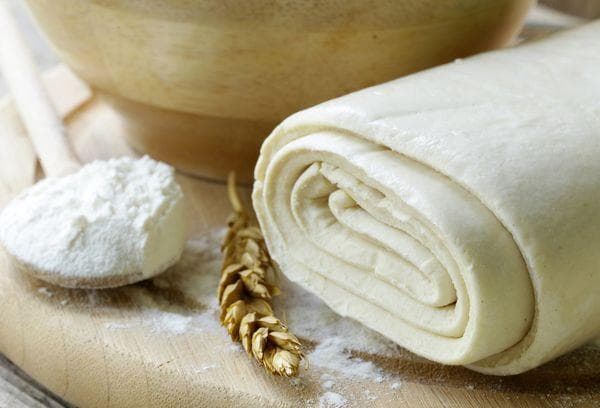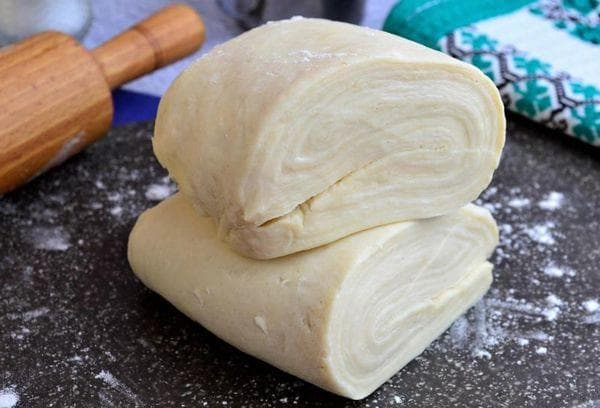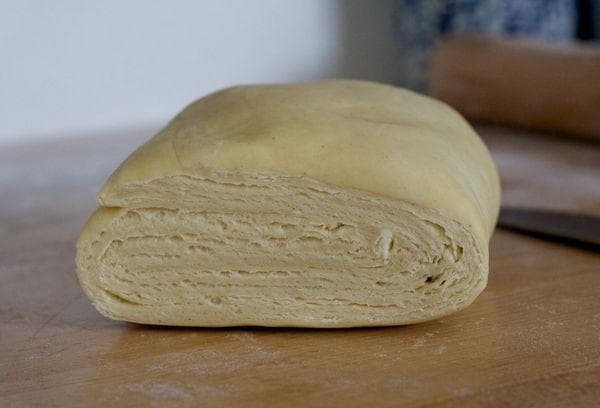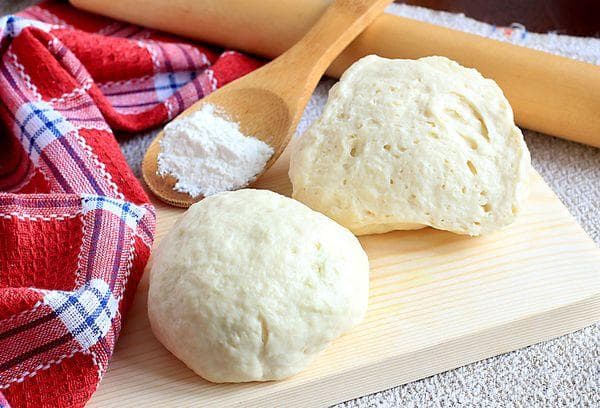The chef explained the difference between puff pastry and yeast-free dough, the pros and cons of baking
Content:
There are different types of dough. Among them are yeast and yeast-free. Both types differ from each other in consistency. They are suitable for baking different types of culinary products. Comparing them will help you find out which puff pastry is better, yeast or yeast-free.
What is yeast dough?
This type of dough is a semi-finished product based on three basic components. This is yeast with flour and water. The main feature of puff pastry is the addition of butter. It can be either creamy or vegetable. The weight of butter in such a semi-finished product is equal to the weight of flour.

What is yeast-free dough?
This type of semi-finished product includes flour and water. No yeast is added to it. In addition to flour and water, a large amount of butter is also added to puff pastry without yeast. It is the same volume as flour.
The difference between the two types of semi-finished products
The main difference is in the composition. Yeast dough contains yeast fungi. This is one of the basic components.The yeast-free semi-finished product does not contain yeast.
Both types of semi-finished products are also characterized by the following differences:
- Pomp. The yeast product rises quickly. The yeast-free one is not as fluffy. It only rises a little thanks to the steam.
- Calorie content. A puff pastry made with yeast has less calories than a puff pastry made without yeast. The second contains a lot of oil, which makes it non-dietary.
- Shelf life. Yeast products do not have a long shelf life. A yeast-free product lasts longer. It is convenient to freeze and store in the freezer for a long time.
A product without yeast differs from a yeast product in density. The first one is thinner and easier to roll out. The yeast-based product is viscous and dense. Rolling it out requires more effort.
Comparison of two types of test
Puff pastry and yeast-free dough can be compared according to a number of criteria, including price and other general characteristics.
| Criterion | Yeast | No added yeast |
| Price | Average price for 500 g – 100-180 rubles | Average price for 500 g – 70-80 rubles |
| Compound | 4 main ingredients: yeast, flour, water and oil | 3 components included in the base: water, flour and oil. |
| Elasticity | Elastic and elastic due to the yeast base | Less firm and elastic |
| Layering | Due to yeast fungi, it can have over 250 layers | The number of layers is on average 100 |
| Pomp | Lush and tall | The semi-finished product is not too fluffy, squat |
| Calorie content | Reduced calorie content (proteins about 5.8 g, fats – 22 g, carbohydrates – 36.5 g) | Lots of calories due to the abundance of oil (proteins - 6 g, fats - more than 26 g, carbohydrates - 37 g) |
| Smell | Rich smell | The aroma of the product is less pronounced |
| Taste | The product tastes slightly sour due to a fermentation reaction that releases carbon dioxide and alcohol | The batch has a less pronounced taste, it is more bland |
The difference between the two types of products lies in the mechanism of their baking. The yeast base is baked due to the yeast present in it and hot steam. That is why such a product turns out magnificent. The yeast-free base is baked only by hot steam. This test base does not open much; it turns out squat.
Pros and cons of yeast product
The main advantages of kneading with yeast include:
- relatively low calorie content (calorie content per 100 g of product is about 366 kcal);
- good dietary value of the product;
- rich taste and aroma of the product.
The advantage of the product is that it turns out fluffy when baked. Thanks to this property, it can be used to make a large number of culinary products (including cakes).
The disadvantages of yeast kneading are:
- insufficient absorption of the product by the body;
- provoking fermentation in the intestines.
Yeast-based products are still quite high in calories. Their poor absorption by the body leads to excess weight gain. Frequent consumption of yeast baked goods provokes obesity. Such products are harmful for overweight people and those with diabetes.
Pros and cons of yeast-free dough base
Kneading without adding yeast has the following advantages:
- benefits for the intestines due to the presence of dietary fiber;
- rapid absorption of the product by the body;
- rapid digestion of products by the intestines;
The yeast-free base is stored for a long time and retains its beneficial properties longer. But it has the following disadvantages:
- high calorie content of the product (calorie content per 100 g is 410 kcal);
- low dietary value of the product due to the presence of a large amount of high-calorie butter.
Important! Yeast-free baking is harmful for overweight people. Puff pastries have a high glycemic index. They quickly increase blood sugar levels. Their use is harmful for people with metabolic disorders.
What to choose for cooking?
Yeast-free dough is more suitable for making the following dishes:
- cakes for "Napoleon";
- apple strudels;
- tubes;
- eclairs;
- tartlets.
The semi-finished product without yeast is a good base for puff pastries. Fillings such as icing, chocolate, fruit jam and cream perfectly complement the taste of yeast-free baked goods.
The yeast base is ideal for any savory baked goods. This is an excellent option for baking. It is better to make croissants, buns, and pies from such a batch. The yeast product serves as a good basis for khachapuri, meat and fish pies. This is the best option for pizza.
Conclusion
There is a big difference between yeast and yeast-free puff pastry. Both types of products differ in composition. The first is based on yeast, which makes it more fluffy, layered and aromatic. At the same time, a yeast-free product is higher in calories. Both types of dough are suitable for baking various culinary products. However, they are all delicious in their own way.



